Telšiai - capital of Samogitia, part 1
Now we will begin our tour to Telšiai - unofficial capital of Samogitia:
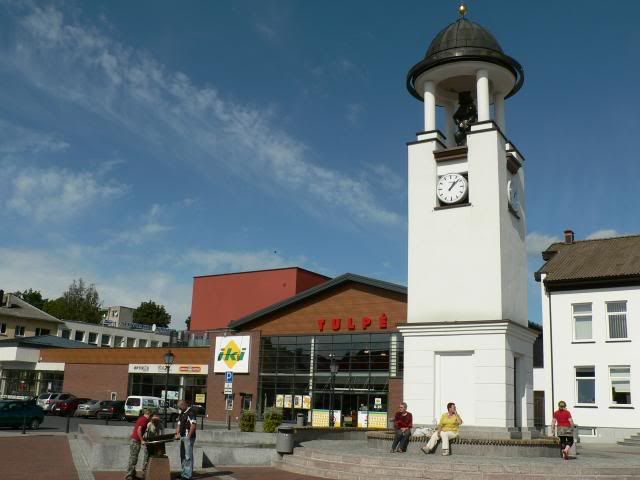
Telšiai is the so-called capital of Samogitia - very specific region in the west of Lithuania. Real Samogitians retained specific dialect which is rather difficult to understand. Some of the Samogitians treats themselves as non-Lithuanians and requires to accept Samogitian as a separate nationality :)
From another point Telšiai is not an old center of this region: for centuries Varniai and Raseiniai played the roles of the center of the region. Only in the 1920s Telšiai became the center of diocese and and the same time began to treat themselves as a center of the region.
Today Telšiai is not only a center of the district but also the center of the county. This county don't has big towns so Telšiai became also the center of the county. Between the county centers Telšiai is the second smallest one (after Tauragė) and just behind Utena. Telšiai has almost 30000 residents - so it is big as a district center but small as a county center. Despite that Telšiai is the center of rich region - this county has oil refinery, some other big industrial enterprises, etc.
Telšiai also has relatively well preserved historical center. Telšiai town is known from 1450 while for the first time this place was mentioned in the 1317 in the Teutonic chronicles but as a small settlement and a place of battle. From 1527 Telšiai is the center of the district. FRom 1624 Telšiai became the center of Bernardine monks and cloister which arrived here under the initiative of then time Telšiai owner Pawel Sapeha. In 1710 most of the Telšiai residents died due the plague epidemic (Samogitia lost then about two thirds of it's residents). Soon town revived but in the new town significant role began to play Jewish community. In 1764 Telšiai for a short time became the center of the repartition (the center of the northern Samogitia) but in 1775 the center has been moved to Šiauliai. Despite the reach history only in 1791 town got Magdeburg rights.
I arrived right into the center of modern Telšiai - square called Turgaus (Market). The square is a mixture of some small older provincial houses and new ones. In many cases I need to acknowledge that new buildings incorporates into the environment mildly:
On the one part of the street and square:
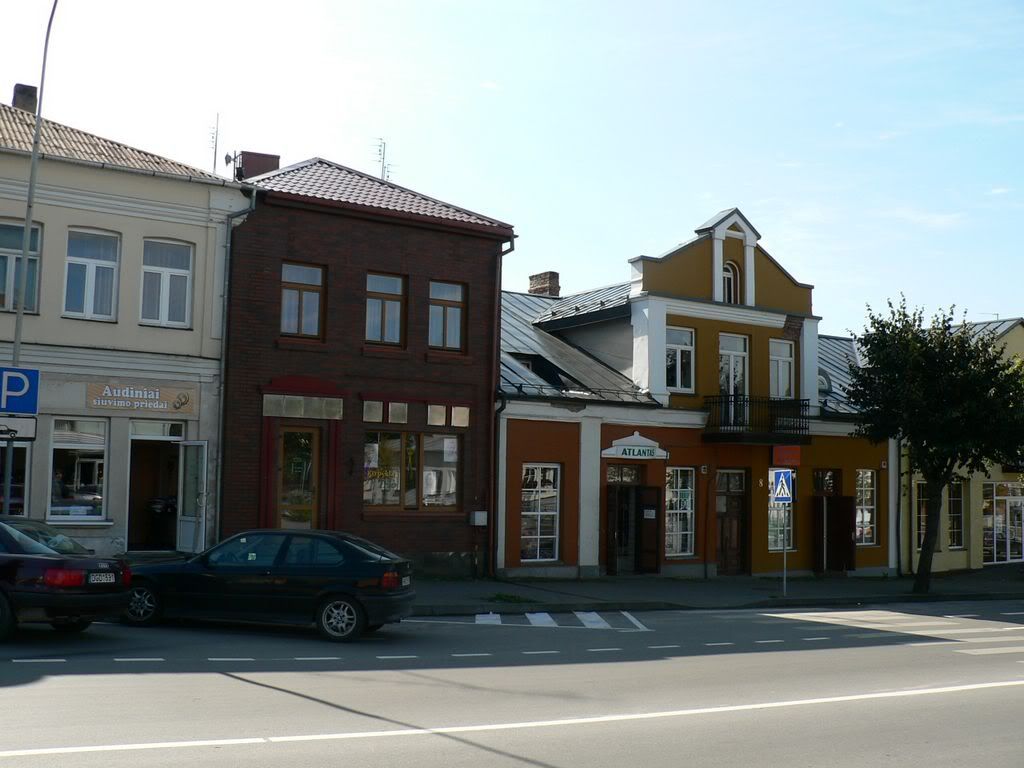
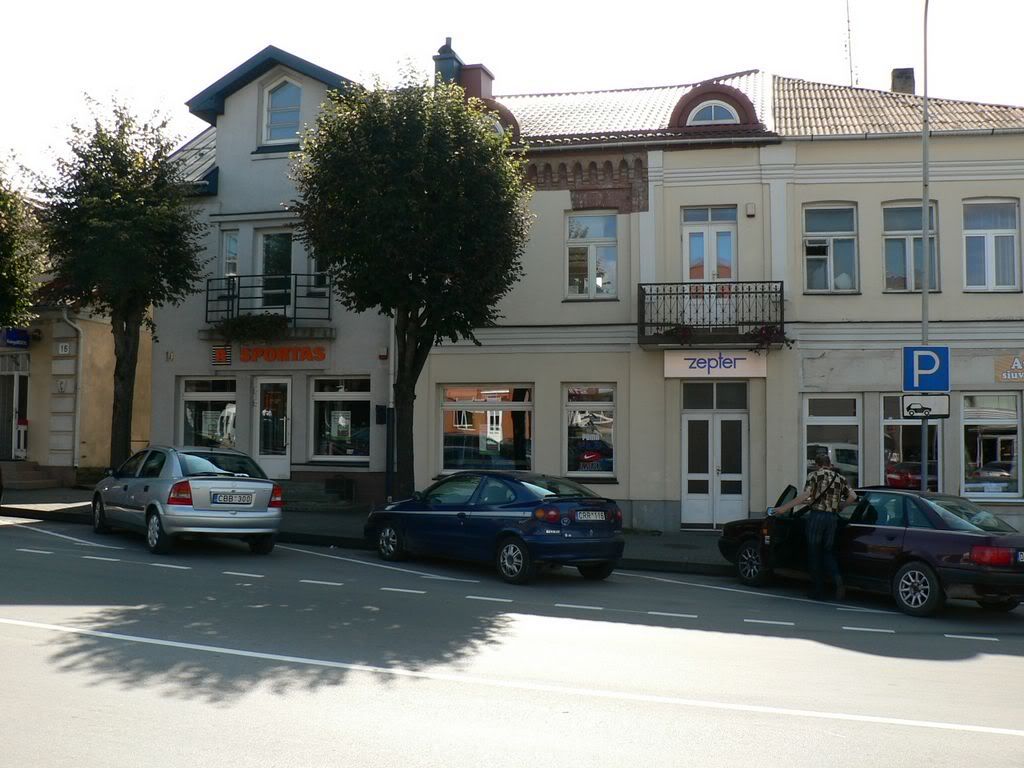
More general view:
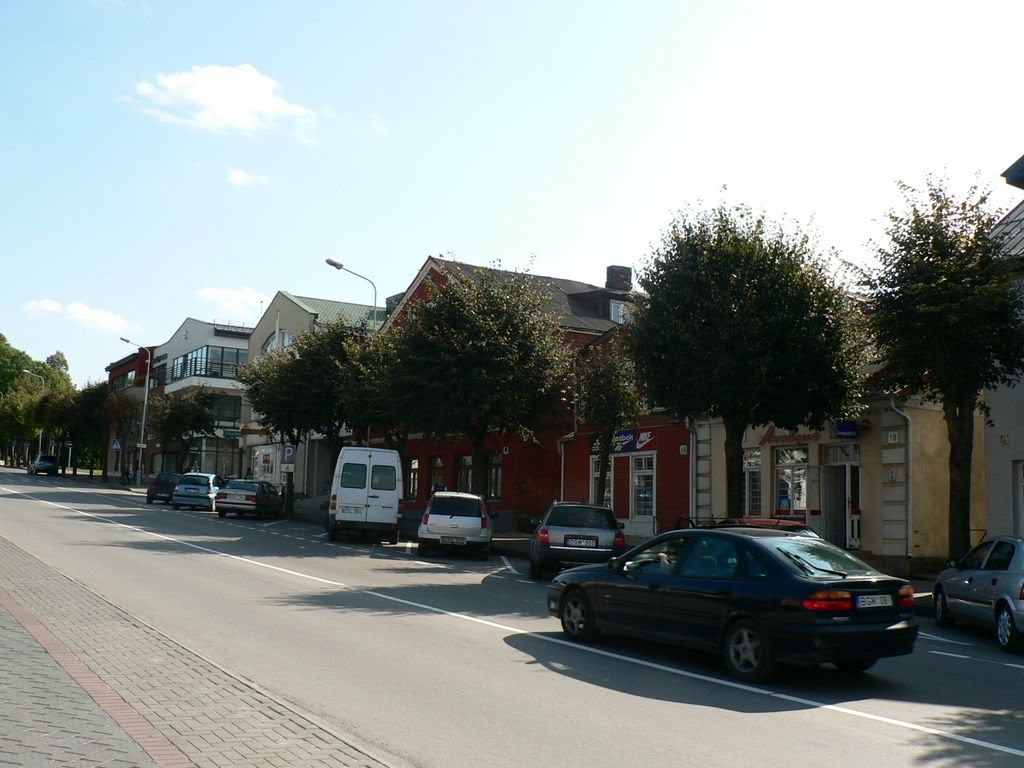
On the other side:
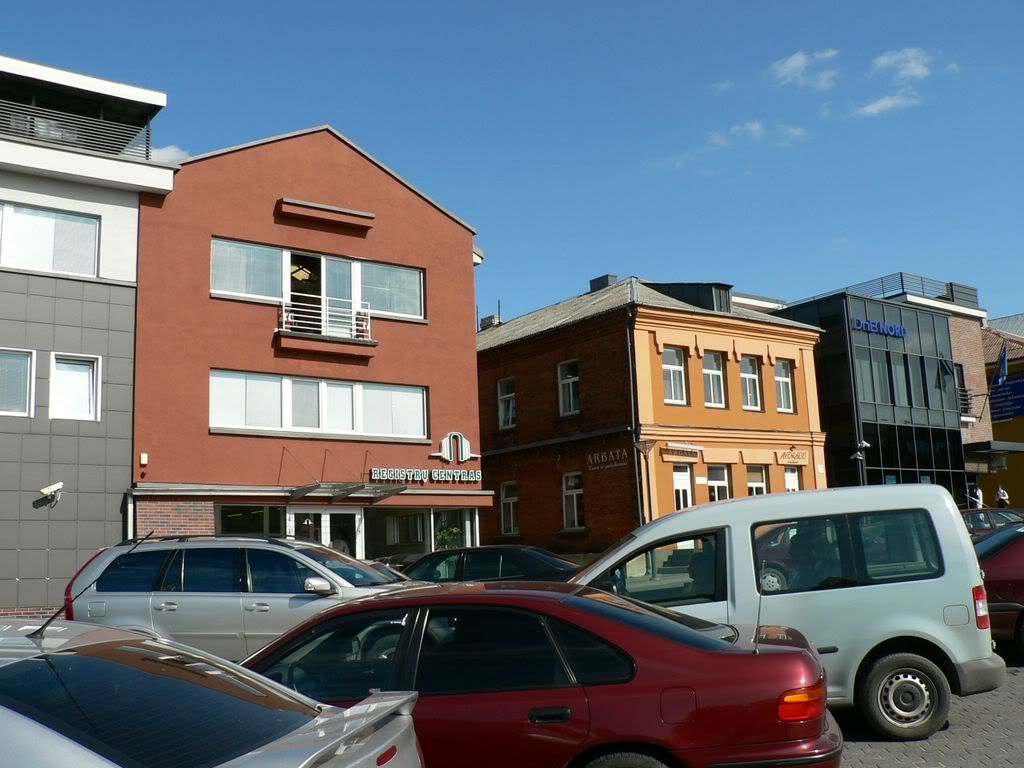
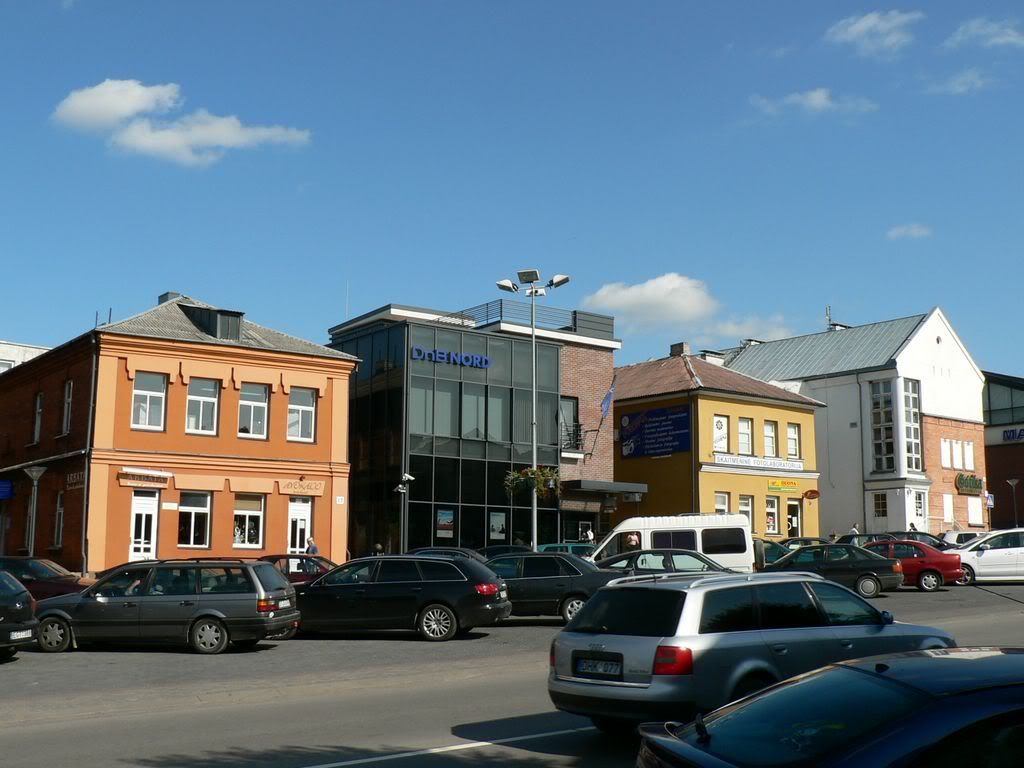
New buildings without big ambitions but also without the desire to suppress older ones:

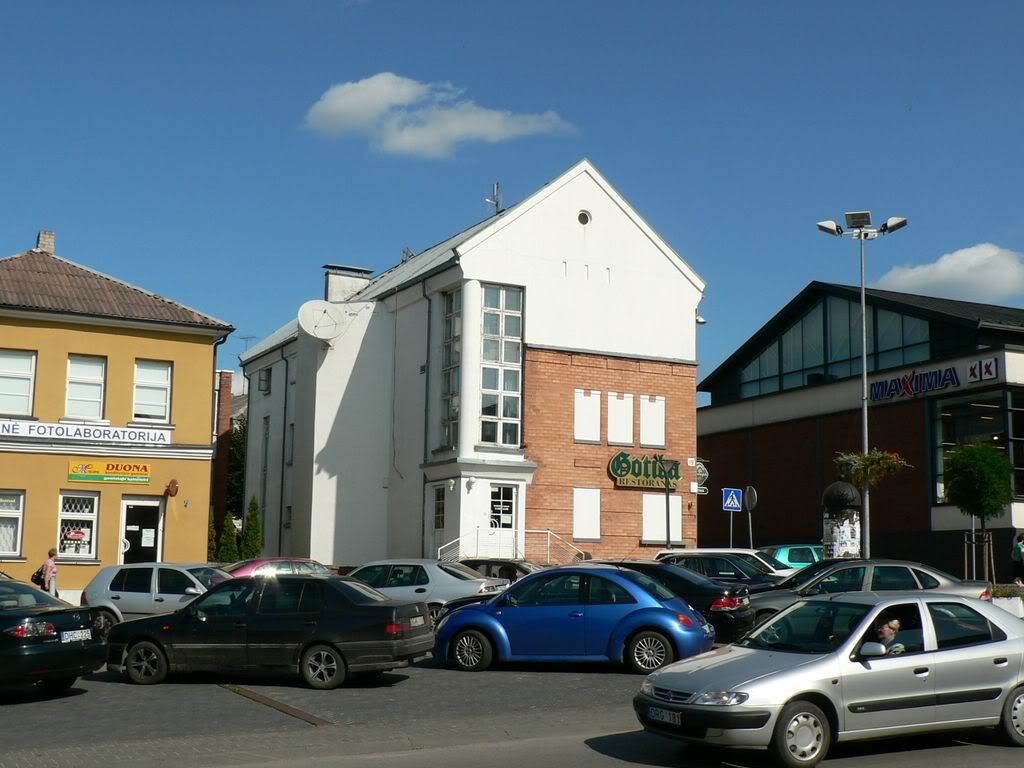
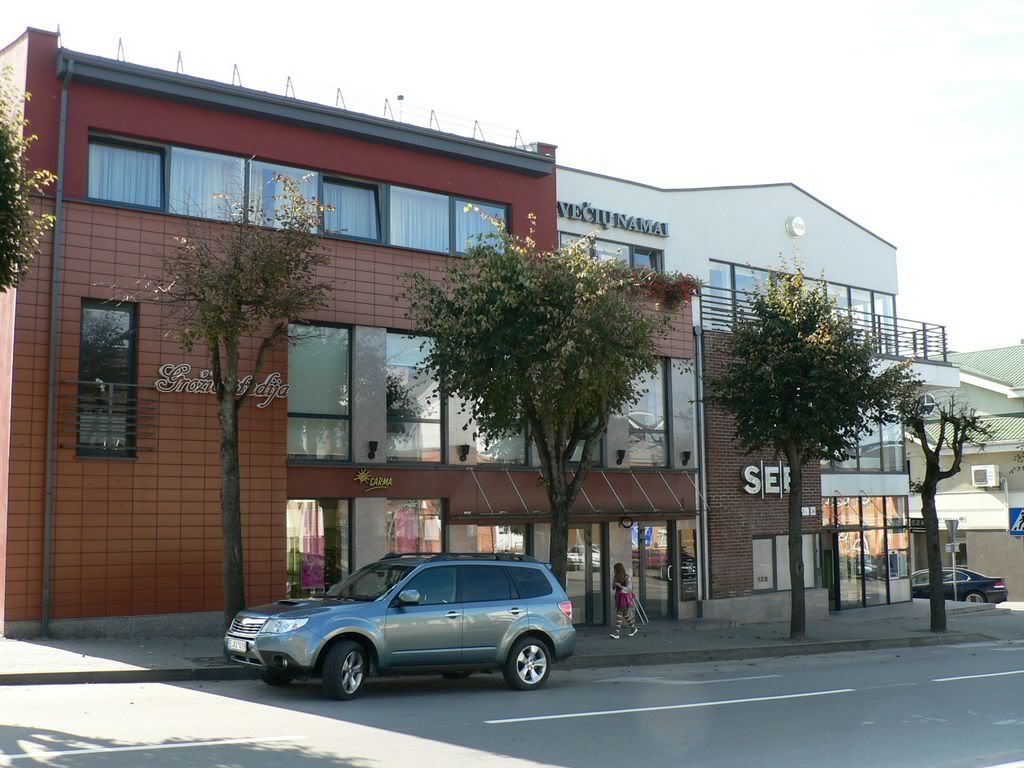
I went to the southern corner of the square. Here you can find tourism information center:

Even the simple supermarket tried to look slightly better here :)))
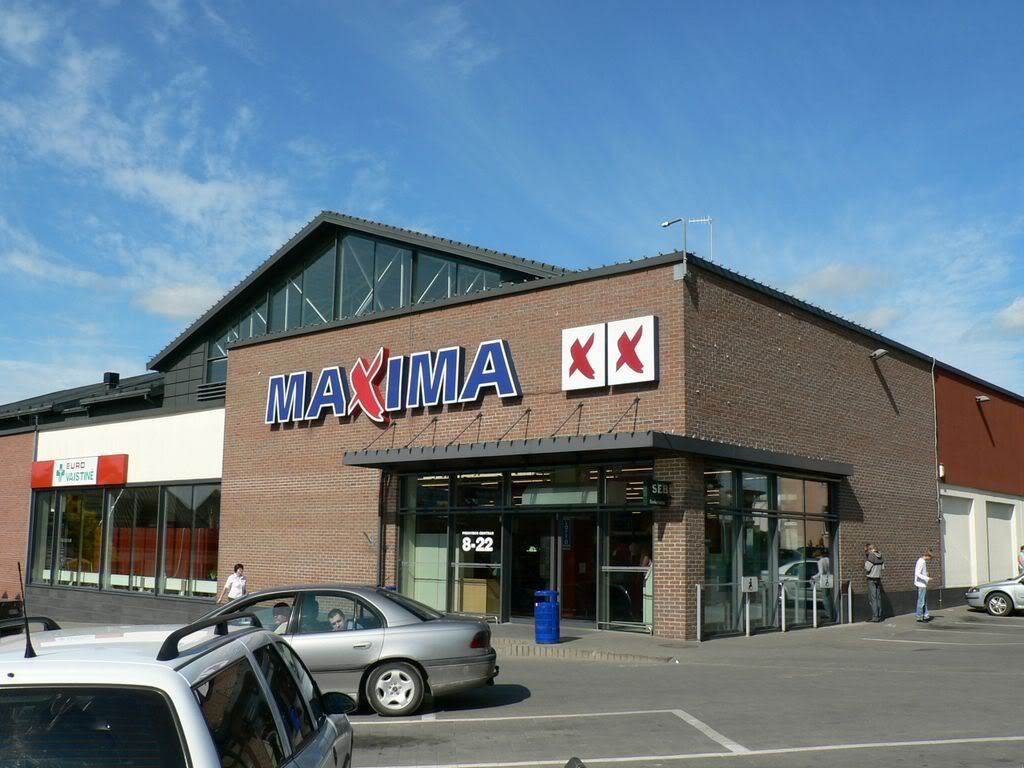
General view to the market square (we will come back):
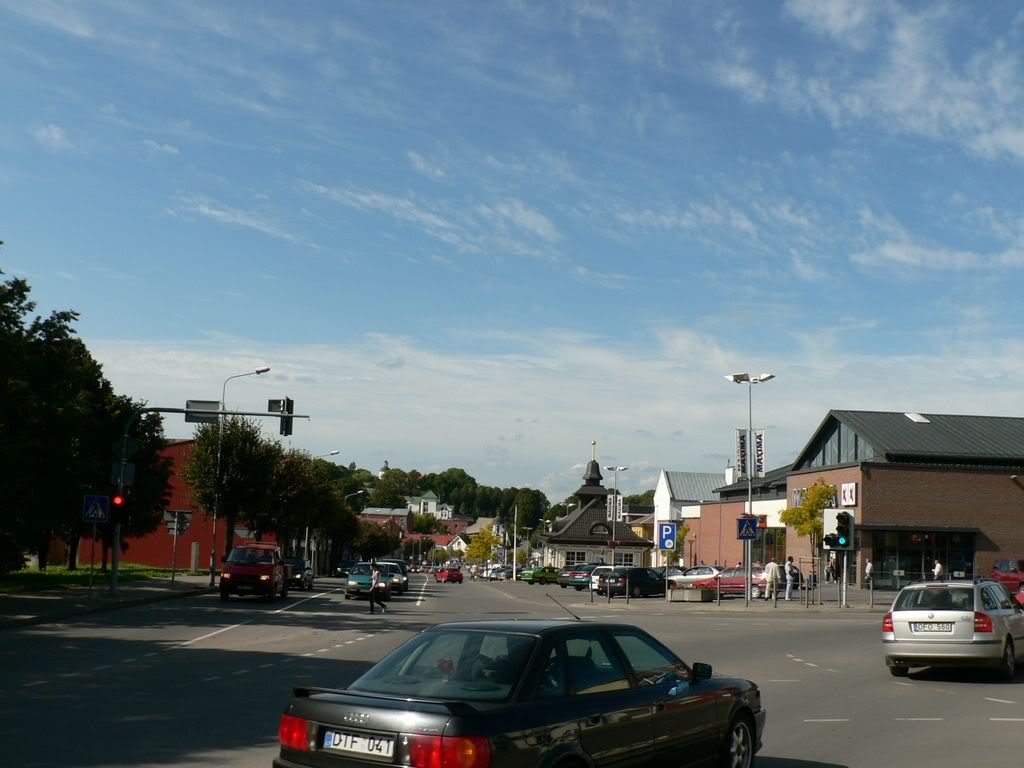
My goal is small church to the south of the square. But first you can see alley:
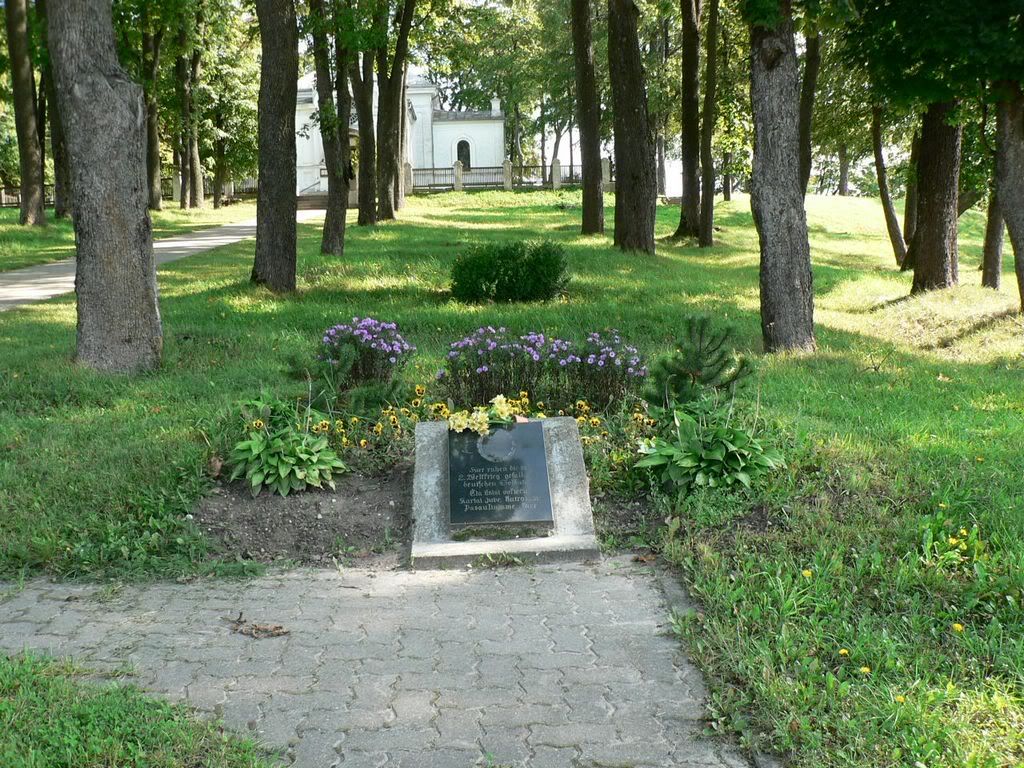
But this alley is also a cemetery of Wehrmacht soldiers who lost their lives in WWII. Memorial table commemorates this:

On the other side of the street called Šviesos behind the trees and in the yard of a school there is another small cemetery of WWII:

Let's come back to the church. This small and unimpressive church was built in 1864-1867 as an Orthodox St. Nicholaus church under the initiative of infamous Muravyov. It was built on the land confiscated from catholic church. In 1920s it became an object of court suit between Catholics and Orthodoxes. Court decision was that church belongs to Orthodox but land to Catholics: so Catholics should to buy back church or Orthodox should to buy back land. Finally Catholics bought the church and Orthodoxes built new church in another place. I told this story because this new Orthodox church became a unique monument in Lithuania - single example of Cubism architecture in Lithuania. But that's later :)
Now the catholic St. Marry Virgin Blessing church :))

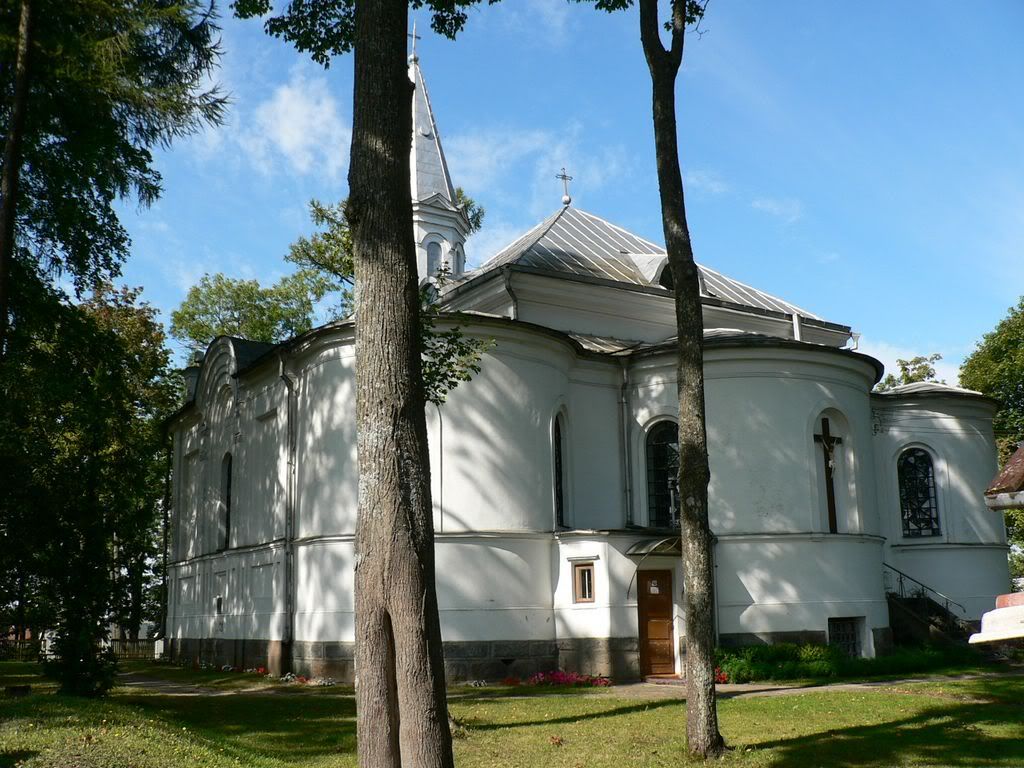
From the church which stands on a hill you may see soviet period areas of Telšiai:
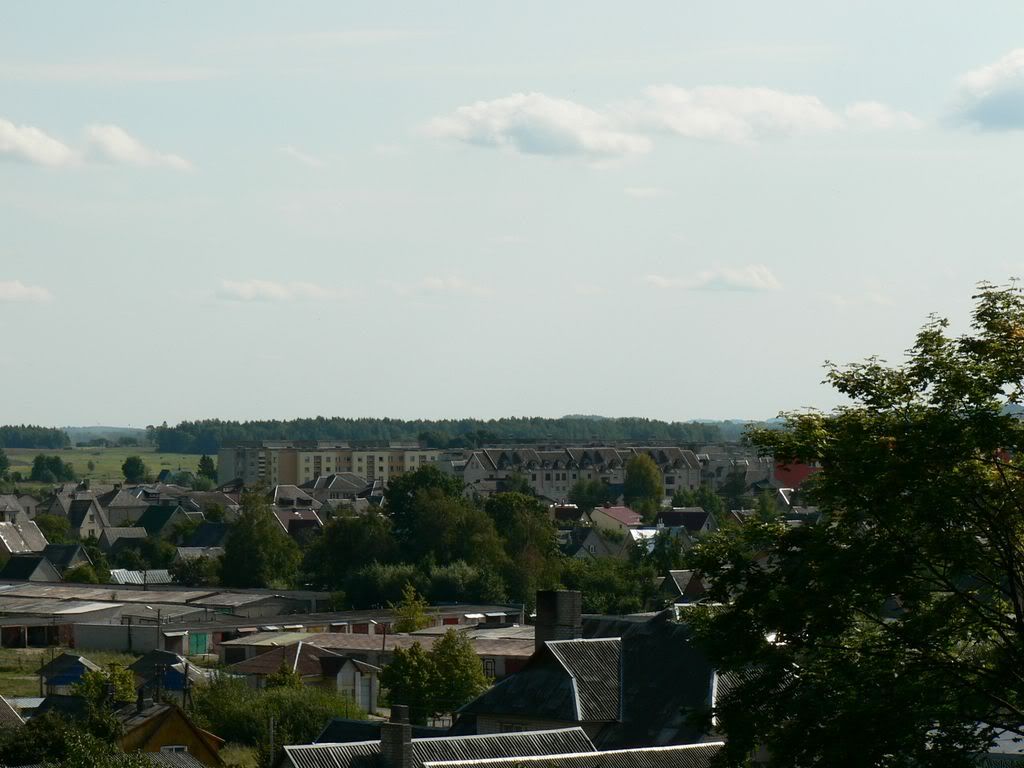
Also near the church you can see monument to the Telšiai residents who lost their lives between 1940 - 1991:
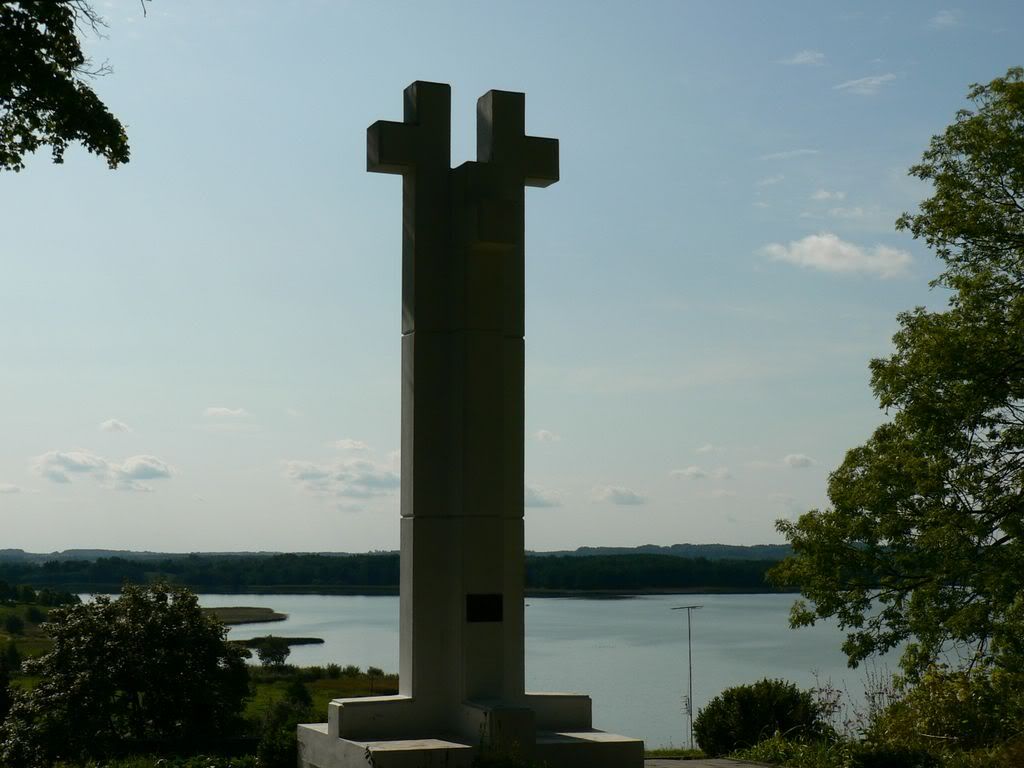
Walk further southern direction don't had sense:
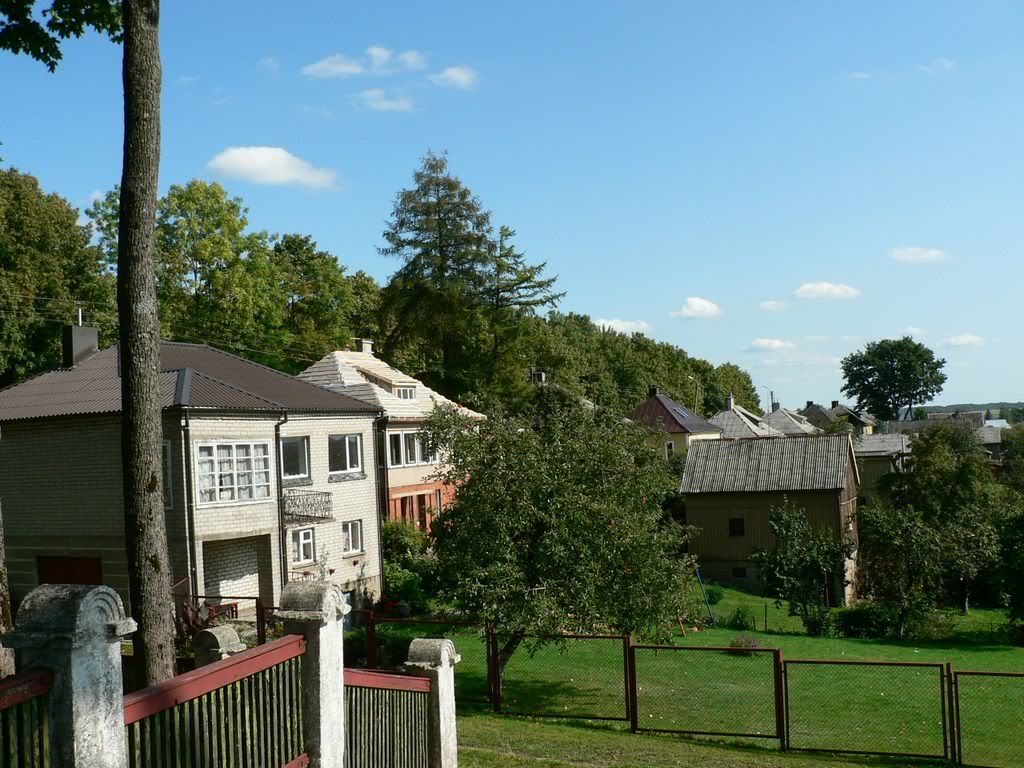
Only at the other side of Šviesos street is Žemaitės school built in 1936 (arch. Vasilij Kopylov). We will mention this architect later in the connection of the Orthodox church :) Telšiai had at least two strong architects (Vasilij Kopylov and Steponas Stulginskis) in the interwar period what made situation here slightly different comparing with the situation in other small towns:
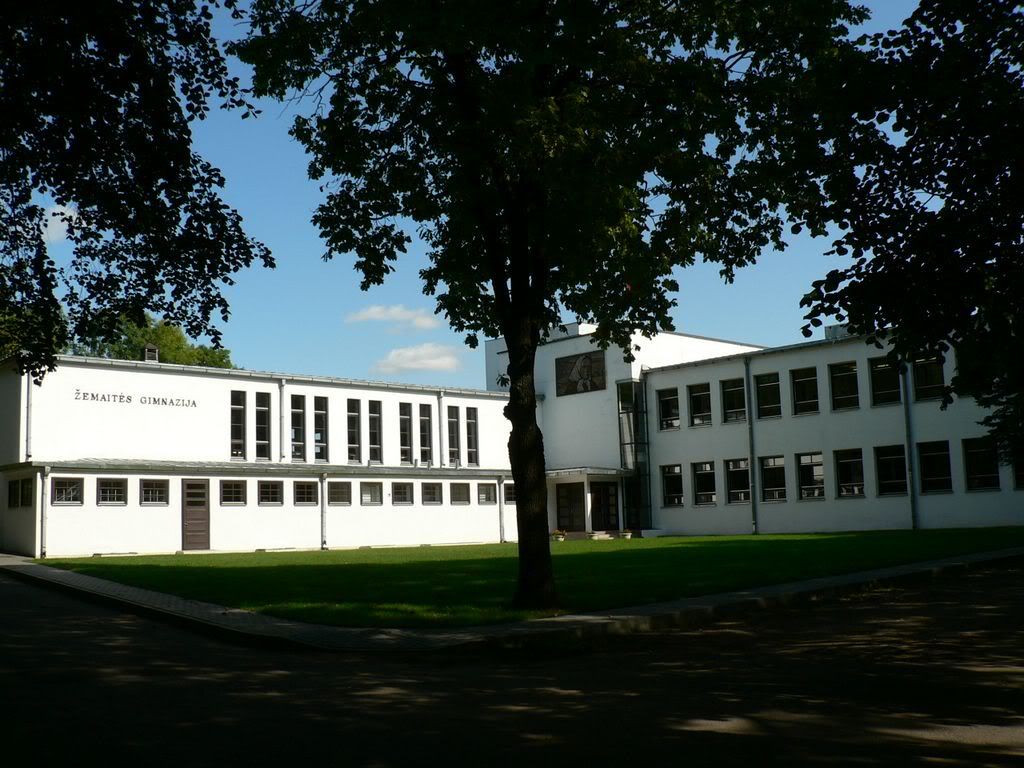
Mosaic of writer Žemaitė portrait on the facade (sculpt. B. Pundzius). Sorry but the lightning was the best :

Then I went back to the Market square and went southern direction:
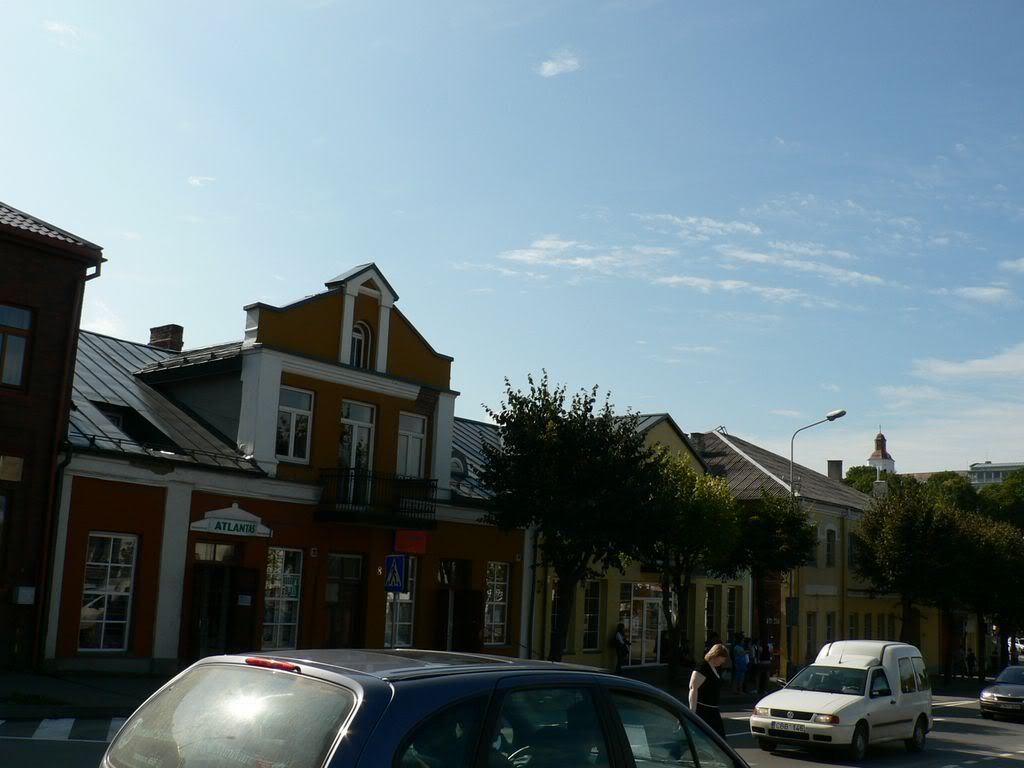
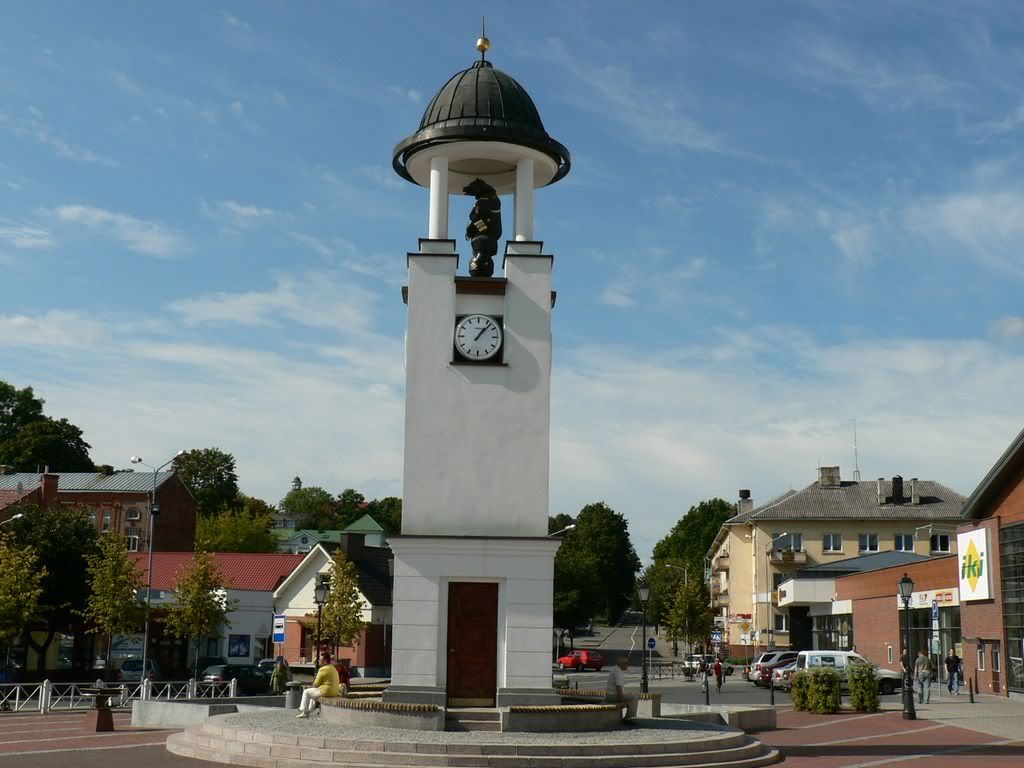
But my further adventures in the next parts :)

counter widget

Telšiai is the so-called capital of Samogitia - very specific region in the west of Lithuania. Real Samogitians retained specific dialect which is rather difficult to understand. Some of the Samogitians treats themselves as non-Lithuanians and requires to accept Samogitian as a separate nationality :)
From another point Telšiai is not an old center of this region: for centuries Varniai and Raseiniai played the roles of the center of the region. Only in the 1920s Telšiai became the center of diocese and and the same time began to treat themselves as a center of the region.
Today Telšiai is not only a center of the district but also the center of the county. This county don't has big towns so Telšiai became also the center of the county. Between the county centers Telšiai is the second smallest one (after Tauragė) and just behind Utena. Telšiai has almost 30000 residents - so it is big as a district center but small as a county center. Despite that Telšiai is the center of rich region - this county has oil refinery, some other big industrial enterprises, etc.
Telšiai also has relatively well preserved historical center. Telšiai town is known from 1450 while for the first time this place was mentioned in the 1317 in the Teutonic chronicles but as a small settlement and a place of battle. From 1527 Telšiai is the center of the district. FRom 1624 Telšiai became the center of Bernardine monks and cloister which arrived here under the initiative of then time Telšiai owner Pawel Sapeha. In 1710 most of the Telšiai residents died due the plague epidemic (Samogitia lost then about two thirds of it's residents). Soon town revived but in the new town significant role began to play Jewish community. In 1764 Telšiai for a short time became the center of the repartition (the center of the northern Samogitia) but in 1775 the center has been moved to Šiauliai. Despite the reach history only in 1791 town got Magdeburg rights.
I arrived right into the center of modern Telšiai - square called Turgaus (Market). The square is a mixture of some small older provincial houses and new ones. In many cases I need to acknowledge that new buildings incorporates into the environment mildly:
On the one part of the street and square:


More general view:

On the other side:


New buildings without big ambitions but also without the desire to suppress older ones:



I went to the southern corner of the square. Here you can find tourism information center:

Even the simple supermarket tried to look slightly better here :)))

General view to the market square (we will come back):

My goal is small church to the south of the square. But first you can see alley:

But this alley is also a cemetery of Wehrmacht soldiers who lost their lives in WWII. Memorial table commemorates this:

On the other side of the street called Šviesos behind the trees and in the yard of a school there is another small cemetery of WWII:

Let's come back to the church. This small and unimpressive church was built in 1864-1867 as an Orthodox St. Nicholaus church under the initiative of infamous Muravyov. It was built on the land confiscated from catholic church. In 1920s it became an object of court suit between Catholics and Orthodoxes. Court decision was that church belongs to Orthodox but land to Catholics: so Catholics should to buy back church or Orthodox should to buy back land. Finally Catholics bought the church and Orthodoxes built new church in another place. I told this story because this new Orthodox church became a unique monument in Lithuania - single example of Cubism architecture in Lithuania. But that's later :)
Now the catholic St. Marry Virgin Blessing church :))


From the church which stands on a hill you may see soviet period areas of Telšiai:

Also near the church you can see monument to the Telšiai residents who lost their lives between 1940 - 1991:

Walk further southern direction don't had sense:

Only at the other side of Šviesos street is Žemaitės school built in 1936 (arch. Vasilij Kopylov). We will mention this architect later in the connection of the Orthodox church :) Telšiai had at least two strong architects (Vasilij Kopylov and Steponas Stulginskis) in the interwar period what made situation here slightly different comparing with the situation in other small towns:

Mosaic of writer Žemaitė portrait on the facade (sculpt. B. Pundzius). Sorry but the lightning was the best :

Then I went back to the Market square and went southern direction:


But my further adventures in the next parts :)
counter widget